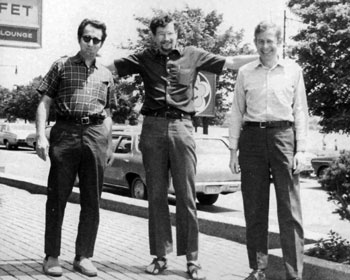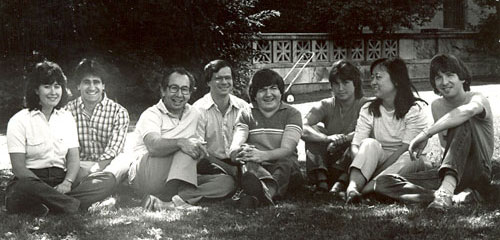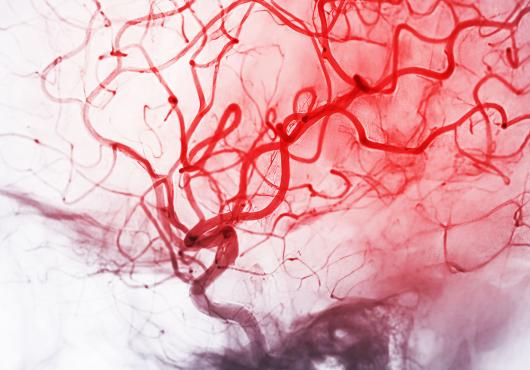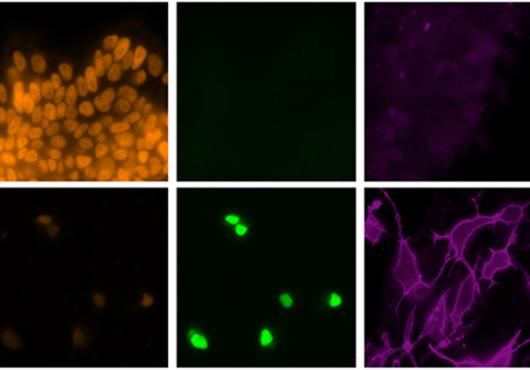
Edward Kravitz vividly remembers one of the most thrilling moments of his 64-year research career at Harvard Medical School.
He and colleague David Potter were working on a groundbreaking experiment that would confirm the identity of the brain’s main inhibitory neurotransmitter — the chief chemical that suppresses signaling between nerves. As the work stretched into a second day, Potter left to teach a class while Kravitz continued carefully analyzing the data.
When Kravitz finally got the pivotal result, he raced down three flights of stairs, across the HMS quadrangle, up four flights of stairs, and burst into Potter’s classroom, breathless, to share the news. Potter’s co-teacher instructed Kravitz to calm down and explain the research to the class. In response, Kravitz rushed to the chalkboard and outlined the entire experiment.
“When something works, for an instant, you’re the only one in the world who knows it. And there’s something very, very powerful about that; it’s an amazing high,” said Kravitz, who recently retired as the George Packer Berry Professor of Neurobiology, Emeritus, in the Blavatnik Institute at HMS.
Kravitz’s enthusiasm for neuroscience remains as strong as it was that day — and is now shared by countless other scientists who have joined his quest to understand the brain.

In 1966, Kravitz, Potter, and a handful of other professors founded the HMS Department of Neurobiology. The first of its kind in the world, the department brought together specialists who, in Kravitz’s words, “worked in a whole lot of very different fields, but soon began talking and collaborating with each other.”
Since then, the field of neurobiology has exploded, as research on the basic biology of the brain has advanced at breakneck speed. Kravitz has been a consistent presence, contributing field-altering insights about neurotransmitters, pushing to increase diversity among neuroscientists, and training generations of new scientists.
Kravitz reflected on these changes and his thoughts on the future of neurobiology in a conversation with Harvard Medicine News.
Harvard Medicine News: Why has neurobiology become such a compelling field?
Kravitz: We definitely did not predict this level of growth when we founded the department. As I recall, in the late 1960s, the Society for Neuroscience held its first annual meeting, which was attended by about 800 people — and we knew half of them. The most recent meeting had over 35,000 people.
I think there are two main reasons for it. The first is interest in trying to cure neurological and psychiatric diseases. These include terrible diseases, but in the 1960s, very little was being done to work on them. Of course, a big question driving this interest is whether you can find cures. So far, the field has cured a few — mostly rare, single-gene diseases — and is getting close on others. The field still has not cracked the major neurological and psychological diseases, including Alzheimer’s, Parkinson’s, schizophrenia, and depression.
The second is a fascination with the brain. When we founded the department, we knew that understanding how the brain worked would be one of the greatest challenges in biology. It still is. The brain is the most important organ in the body; it governs who we are.
HMNews: You spent your career working with lobsters and fruit flies. Why?
Kravitz: Some scientists think that studying mammals is the only way to learn anything of value about how the nervous system functions — an attitude that I’ve called “higher vertebrate chauvinism.” Even in the late 1980s, neuroscientists were arguing about whether insects functioned only by reflexes or whether they had any cognitive ability. Those of us who chose to work on these organisms soon realized how sophisticated they are. They display complex behaviors; they can learn and remember; they can solve problems and perform tasks. We have learned a lot by studying these relatively simple animals.
HMNews: What are the most exciting changes in neurobiology?

Kravitz: That has to be the wealth of tools that are now available; technologically, there has been tremendous progress. When we began the department, the only high-powered tool was the electron microscope, which had been recently introduced. The rest were standard methods from physiology, biochemistry, and physiology developed in the 1950s.
To me, the most powerful new tool is genomic sequencing. The human genome has opened up new avenues for understanding genetic diseases. The fruit fly genome has provided us with incredible genetic tools, which is why my group switched to working with flies. These tools let us find and manipulate single nerve cells associated with specific behaviors and see how a live animal responds.
As novel tools are added, people should not be afraid to start using them. I began working with fruit flies at age 70, which meant I had to learn genetics — and that wasn’t easy. But these genetic tools allowed us to learn valuable information about complex behaviors like aggression.
On the flip side, scientists who introduce new tools shouldn’t claim that they’re now going to solve everything in neurobiology. No single technology is going to tell us how the whole brain and nervous system work.
HMNews: What were some of the early misconceptions in the field?
Kravitz: One mistake related to our early research was that in the early 1960s, leading U.S. scientists claimed that gamma-aminobutyric acid (GABA) was not an inhibitory neurotransmitter, despite physiological work suggesting that it might be. A few years later, our biochemical studies confirmed that GABA was the major inhibitory neurotransmitter in the brain.
The mistake came about because at the time, many U.S. scientists believed that nerve cells were so dense that transmission between them had to be electrical, not chemical. There was a whole series of papers on this topic that was highly imaginative and creative, but completely wrong. Now we know that synapses between nerve cells allow chemicals to move through the nervous system. That was a monster mistake at the beginning of the field.

There were also inaccuracies in how people talked about research on genetic diseases. I was on the board of the Hereditary Disease Foundation, which at the time dealt only with Huntington’s disease. Every year scientists would claim that they had found the cause of Huntington’s — and the next year other scientists would claim that no, that wasn’t true. That made me feel awful for the patients who held onto every word the scientists said.
That’s why, in the early 1980s, several of us at HMS started a course called The Neurobiology of Disease, which we’re still teaching. We felt that the scientific work being done on nervous system diseases had to improve, and we could help it along by teaching the next generation of scientists how to distinguish facts about a disease from favorite hypotheses.
HMNews: What do you anticipate about the future of neurobiology?
Kravitz: For the first time in the 40-plus years I’ve been teaching the course, I think that we will start solving some of these nervous system diseases. I believe we’ll start to see not only treatments, but cures. This will likely happen first for neurological diseases, and later for psychiatric diseases. Of course, new complications may pop up. For example, if patients start living longer, they may experience secondary effects of the same genetic mutations. Still, getting cures will be really, really exciting.
I also think that we are getting closer to understanding how the brain processes information. Until now, no one has been able to explain from beginning to end how we process a smell and recognize it as a smell, or how we process the visual world and see it in our minds. We understand the basics of how brain cells gather information, but we don’t know how they process this information to yield thoughts and actions. That is the real challenge of understanding the brain.
HMNews: You were part of early efforts to increase diversity at HMS. Why did you get involved?
Kravitz: Throughout the 1960s, we saw terrible things happening on the news every night related to the Vietnam War and racial relations in the country. It took the Martin Luther King Jr. assassination to push a group of us to address the problems at HMS. It struck us that when we gave lectures to our medical students, we looked out and saw only white faces, and mostly men. Jon Beckwith, a microbiology professor, called me up and said, we have to do something about this.
At the time, HMS was admitting an average of less than one Black student per class. That was pretty bad, and we were sure that more Black students were suitable for HMS. Four days after the assassination, nine of us drew up a proposal to increase the number of Black students at HMS to 10 percent of the class. It took a lot of work — including a highly contentious faculty meeting — but we eventually got the support of the dean and department chairs, and the proposal was accepted. Our efforts led to a significant change in American medicine. Since then, I’ve continued working with various groups and organizations to increase diversity at HMS and in neurobiology.

Things have improved, but it’s not perfect, and there’s still a lot to do. For example, I’d like to see more professors visiting historically Black colleges and universities and other institutions with large numbers of minority students to talk about how to get into the best professional schools. There are outstanding students from all backgrounds in our country, and we need to find them, help them get the best education possible, and turn them loose to help society. We need these students to see that there are doors open, because they are the future of science.
HMNews: What do you think makes a good scientist?
Kravitz: A good scientist is not afraid to take chances, take on big projects, and adapt to something new. A good scientist is also committed to taking on students and training them. Students bring vitality to a lab, which is particularly important as scientists get older and have less time to spend working in the lab. Students also challenge you. For example, Marge Livingstone, who is now the Takeda Professor of Neurobiology at HMS, recently told me about several things that I said no to when she was my PhD student. As it turned out, she was right and I was wrong — and her experiments sparked my interest in animal behavior. It’s OK for scientists to be wrong. In fact, you can be both right and wrong.
I also think teaching is important. Scientists should take their teaching as seriously as their science. Personally, I hope my lab has contributed something important to the field and that I’ve inspired many students to continue in their careers. I would be very happy to find out that I’ve had a positive impact on folks.
This interview was edited for length and clarity.





